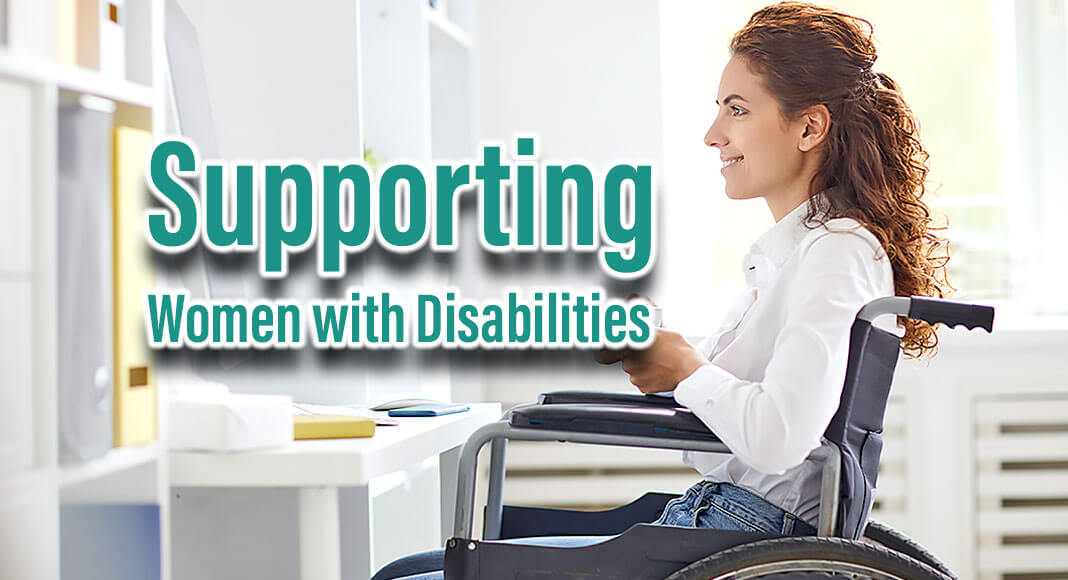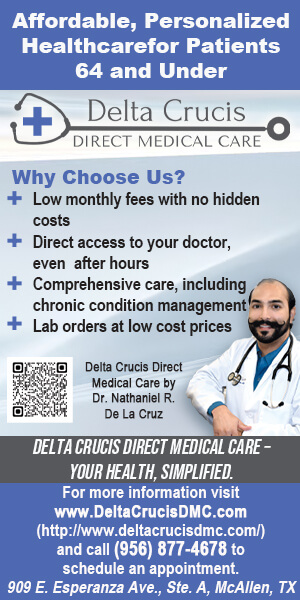
Mega Doctor News
CDC – An estimated 35 million women in the U.S. report having a disability. Having a disability does not mean a person can’t be healthy. Women with disabilities require health care and health programs for the same reasons anyone else does—to stay well, active, and a part of the community. Being healthy means the same thing for all of us—getting and staying in good physical, mental, and emotional health so we can lead full, active lives.
A disability is any condition of the body or mind (impairment) that makes it more difficult for the person with the condition to do certain activities (activity limitation) and interact with the world around them (participation restrictions). Disability is especially common among women, American Indian and Alaska Native people, adults with income below the federal poverty level, and people in the South U.S. census region.2Women with chronic physical disabilities, such as difficulty walking, are more likely to report fair or poor health than women without disabilities.3
Read on to learn more about the challenges women with disabilities experience and how you can help support disability awareness.
Life Conditions
The conditions in which we are born, live, learn, work, play, worship, and age – known as social determinants of health – have a profound impact on health. These conditions can magnify or diminish health disparities and challenges with accessing care for women with disabilities. For example, women with disabilities are more likely to live in poverty, have lower educational levels, and lack health insurance compared to women without disabilities.4 Improving social determinants of health, such as promoting physical access, changing social attitudes to foster disability inclusion, and removing social and environmental barriers to health care access, can facilitate optimal health and full participation in society for people with disabilities.
Mental Health
Women with disabilities are more likely to experience frequent mental distress than men with disabilities. Mental distress is also greater among people with disabilities experiencing poverty, unemployment, and unmet health care needs due to cost.
Learn about Stress and Coping and Mental Health Tools and Resources.
Intimate Partner Violence
Women with a disability are more likely to experience intimate partner violence including sexual and physical violence, stalking, psychological aggression, and control of reproductive or sexual health when compared to women without a disability.6
Learn how to prevent intimate partner violence, including selected programs, policies, and practices.
Access to Health Care
Women with disabilities experience greater disparities in healthcare access compared to women without disabilities. Common barriers to accessing health care reported by women with disabilities include:
- Attitudes, stereotypes, and misperceptions about people with disabilities
- Lack of provider knowledge and skills and provider discomfort caring for persons with disabilities
- Physical access barriers, including barriers with health care equipment (such as lack of height-adjustable tables or wheelchair scales), difficulty with physical transfers, and access barriers to bathrooms, parking, and buildings (such as lack of high-contrast signs and lighting)
- Financial barriers such as inadequate health insurance
- Difficulty scheduling appointments and inadequate time allowed for appointments
- Inadequate communication with health care providers
- Inadequate health education materials for persons with visual or cognitive impairments
- Limited or costly specialized transportation options
- Limited access to health care facilities, such as living in a rural area
Several strategies can improve access to quality health care for women with disabilities:
What health care providers can do:
- Improve clinical knowledge and care for persons with disabilities.
Improve knowledge about conditions that cause disability, the functional impacts of these conditions, and effective interventions. Develop physical assessment skills to properly examine persons with disabilities. Assess sexual history, sexual violence, reproductive preferences, and pregnancy intention for women with disabilities. Ensure that women receive preventive health screenings
- Practice patient-centered care with all health encounters. Provide patient-centered care that emphasizes respect for patients’ preferences, needs, and values. Respect patients as individuals and value their expertise regarding their disability experiences. Do not assume what women with disabilities want or what is important to them. Ask women with disabilities what their preferences are for treatment interventions.
- Participate in disability education and training programs. Training programs on disability and inclusion have demonstrated significant improvements among providers in disability knowledge and more positive attitudes and comfort level towards persons with disabilities. Address stigmatizing attitudes towards women with disabilities.
What organizations and communities can do:
- Reduce structural barriers for persons with disabilities. Follow state and federal statutes that govern accessibility for persons with disabilities such as the Americans with Disabilities Act and the Affordable Care Act. Create accessible treatment spaces, including height-adjustable examination tables, parking, and signage. Advocate with third party payers and others to provide adequate time and resources for an effective client encounter.
Preventive Health Screening
Women with disabilities are less likely to receive preventive health screening, such as breast and cervical cancer screening, within recommended guidelines.8 Barriers to screening may include the lack of accessible equipment, cost of screening, or lack of insurance. Providers may also be less likely to advise or refer women with disabilities for Pap or mammography screening tests or other preventive health screenings.
The following resources provide information on preventive health screenings for women with disabilities:
Women with disabilities can:
- Access breast cancer screening resources for women with disabilities.
- CDC has developed health promotion materials to increase awareness of breast cancer among women with disabilities and encourage these women to get screened. Materials share the tagline “Breast Cancer Screening: The Right to Know” and feature four women with disabilities who have survived breast cancer. Access these helpful resources.
- Talk to a health care provider about cervical cancer screening. Cervical cancer is highly preventable with regular screening tests and follow-up. It is also highly curable when found and treated early. All women are at risk for cervical cancer, including women with disabilities. It is important to get tested for cervical cancer because 6 out of 10 cervical cancers occur in women who have never received a Pap test or have not been tested in the past five years. Learn more about cervical cancer screening.
Health care providers can:
- Discuss preventive health screenings with women and ensure they have access to recommended screenings.
The Surgeon General’s Call to Action to Improve the Health and Wellness of Persons with Disabilities asks that all health care providers:
- Give each patient—including women with disabilities—the information needed to live a long and healthy life.
- Listen and respond to the patient’s health concerns. Give each patient the information needed to prevent or treat a health concern—even if the patient does not ask for it. As a health expert, you should offer the information.
- Communicate clearly and directly with the patient. If your patient does not understand your questions or instructions, repeat what you have said, use other words, or find another way to provide the information.
- Take the time needed to meet the patient’s health care needs.
Reproductive Health
10% to 12% of reproductive-aged women have a disability. Women with disabilities are more likely to have delayed prenatal care initiation and elevated risk for adverse health conditions that impact maternal and infant outcomes, including gestational diabetes, obesity, chronic hypertension, hypertensive disorders of pregnancy (such as preeclampsia), cesarean section, and infant low birthweight.
Women with disabilities report that health care providers have limited knowledge about specific support needs and other resources for women with disabilities during and after pregnancy, or providers demonstrate negative attitudes and misconceptions regarding the preferences or abilities of women with disabilities to have children.
To reduce some of the personal, social, and structural barriers to reproductive care for women with disabilities:
Women with disabilities can:
- Explore resources and opportunities to expand their reproductive health knowledge, including preparing for a healthy pregnancy.
- Discuss reproductive health concerns and available services with health care providers, including contraception, pregnancy, and menopause.
- Share reproductive health preferences with intimate partners, including contraceptive methods, pregnancy intention, and sexual activity.
Providers and support persons can:
- Anticipate and accommodate special needs for women with disabilities, such as the need for specialized medical equipment, accessible height for examination tables, and other equipment or supports to optimize gynecological and other health examinations
- Provide reproductive health information and foster acceptance around a woman’s right to consensual sexual expression, including rights for women with intellectual and other disabilities
- Acknowledge and plan for pregnancy intention preferences of women with disabilities
- Provide infant care equipment, such as cribs or changing tables, that are accessible by women with disabilities
- Learn and incorporate tips for communicating with female patients with intellectual disabilities.
Health and data systems can:
- Collect and utilize administrative, clinical, and population health data to better understand and address needs and risks for persons with disabilities related to pregnancy and reproductive health











